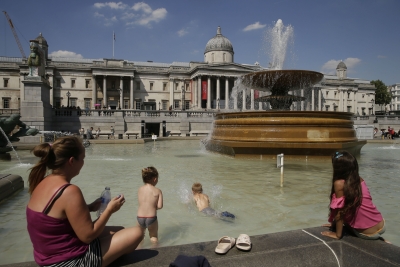London: The United Kingdom (UK) has been seeing an increase in the frequency of temperature and rainfall extremes through the past decade, according to an annual analysis released Thursday by the Met Office.
Published in the International Journal of Climatology, this year’s “State of the UK Climate” report found the number of days with temperatures over 28 degrees Celsius, which the Met Office defines as hot days, has more than doubled in the decade from 2014 to 2023 compared with the average level from 1961 to 1990, while “very hot” days of at least 30 degrees Celsius have tripled.
The report also found that the latest decade had around 20 per cent more days of exceptional rainfall than the 1961-1990 average, Xinhua news agency reported.
“Our new analysis of these observations really shines a light on the fastest changing aspects of our weather as a consequence of climate change,” said the lead author and Met Office climate scientist Mike Kendon.
“Long term averages can be difficult for people to relate to, but what we are showing here is the notable change in frequencies of extreme weather that can have a real impact on people’s lives,” he said.
According to the report, 2023 was the UK’s second warmest and seventh wettest year on record, with data dating back to 1884 and 1836, respectively. The year saw the warmest June and a significant September heatwave. The storm season in 2023 had the most active start since storm-naming began in 2015, bringing challenges for infrastructure, health and well-being.
Met Office scientists found that “human-induced climate change” had made weather extremes much more likely to happen.” Professor Liz Bentley, chief executive of the Royal Meteorological Society, said the annual report can help people understand how human activities like burning fossil fuels increase the likelihood of extreme events, informing “how we will need to adapt, now and in the future.”
The Met Office said that the decade from 2014 to 2023 was on average 0.42 degrees Celsius warmer than 1991-2020 and 1.25 degrees Celsius warmer than 1961-1990. Additionally, winters during 2014-2023 were nine percent wetter than the decade of 1991-2020 and 24 percent wetter than 1961-1990.
–IANS


Comments are closed.